Belfast is entering its Rainbow Era
A new queer generation is ushering Belfast into its rainbow era
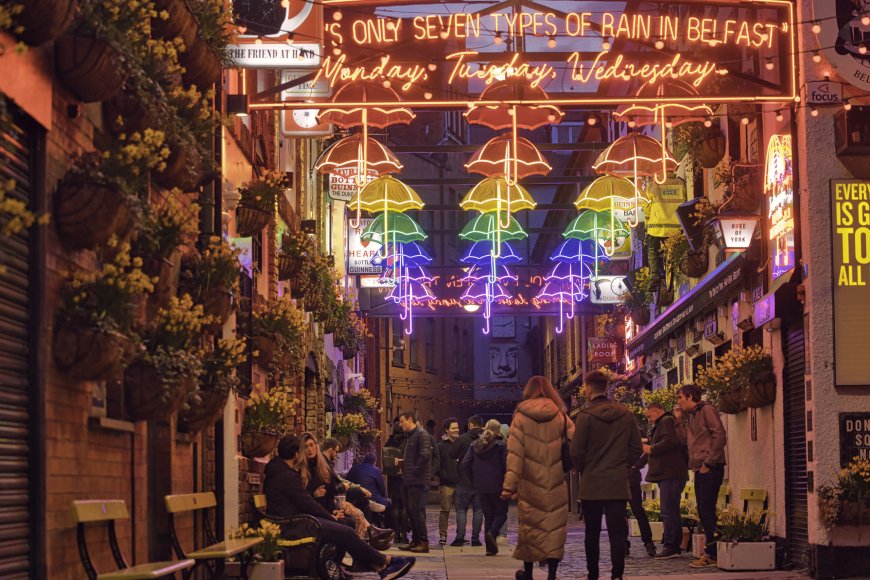
“Just remember: no rain, no rainbows,” reads a neon sign in Belfast’s Commercial Court, a popular pedestrian street with a permanent art installation of multi-colored umbrellas.
For Belfast, this message is multi-layered.
Beyond dealing with literal precipitation–this is Northern Ireland after all–a new queer generation is guiding Belfast out of a tempest and into its rainbow era.
During the three decades of unrest known as “The Troubles”–when sectarian violence plagued city streets–there was little time for Northern Ireland to focus on LGBTQ+ rights.
Now, 27 years since the Good Friday Agreement (also called the Belfast Agreement) brought peace, Belfast is emerging as a welcoming destination, with new tours teaching our community’s history, a friendly queer nightlife, and a recently unveiled stained glass window commemorating the city’s equality movement, permanently illuminating City Hall.
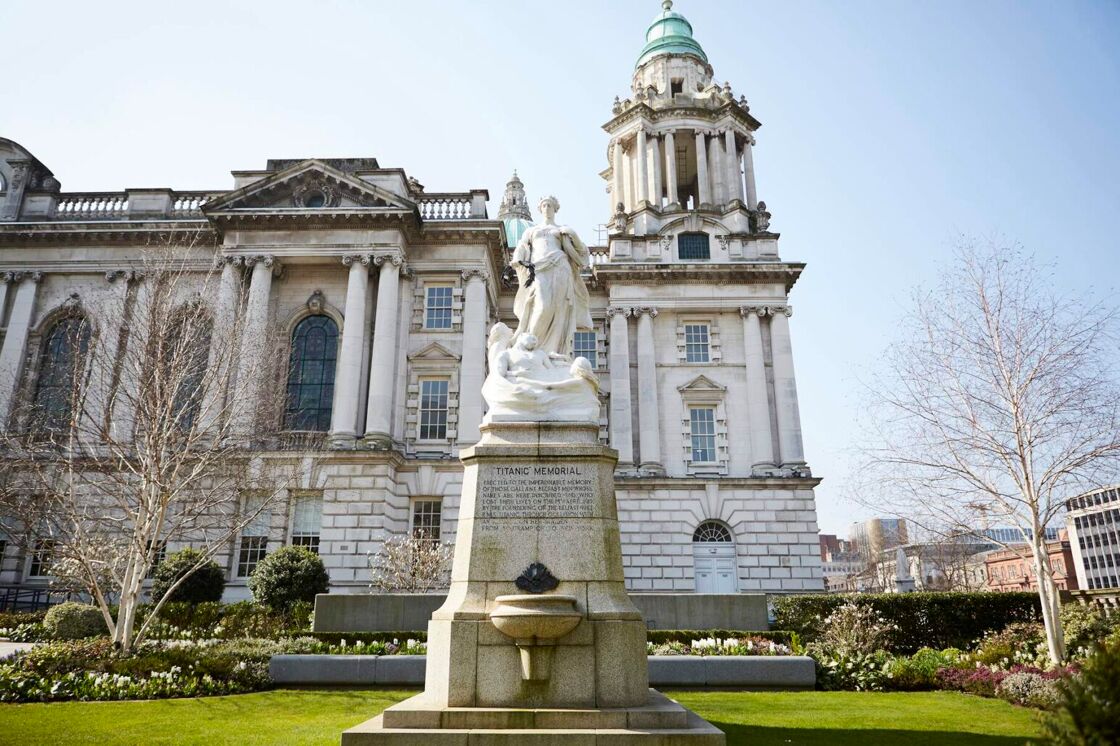
Pack your bags, we’re going on an adventure
Subscribe to our weekly newsletter for the best LGBTQ+ travel guides, stories, and more.
Subscribe to our Newsletter today
Stormy Weather
The complex history of Northern Ireland is primarily characterized by two conflicting identities: Unionists loyal to the United Kingdom (mainly Protestant), and Nationalists who are faithful to Ireland (mostly Catholic). In the late 1960s, the divisions within the country worsened as they entered “The Troubles.”
For an in-depth history lesson, the Ulster Museum details the conflict with a physical and digital exhibition called “Troubles and Beyond,” while acknowledging that perceptions of the period vary: “Inevitably, the interpretation of these events is contested in terms of their significance, meaning and responsibility. While we have a shared past, we do not have a shared memory.”
By the time a peace agreement arrived in 1998, over 3,600 lives had been lost.
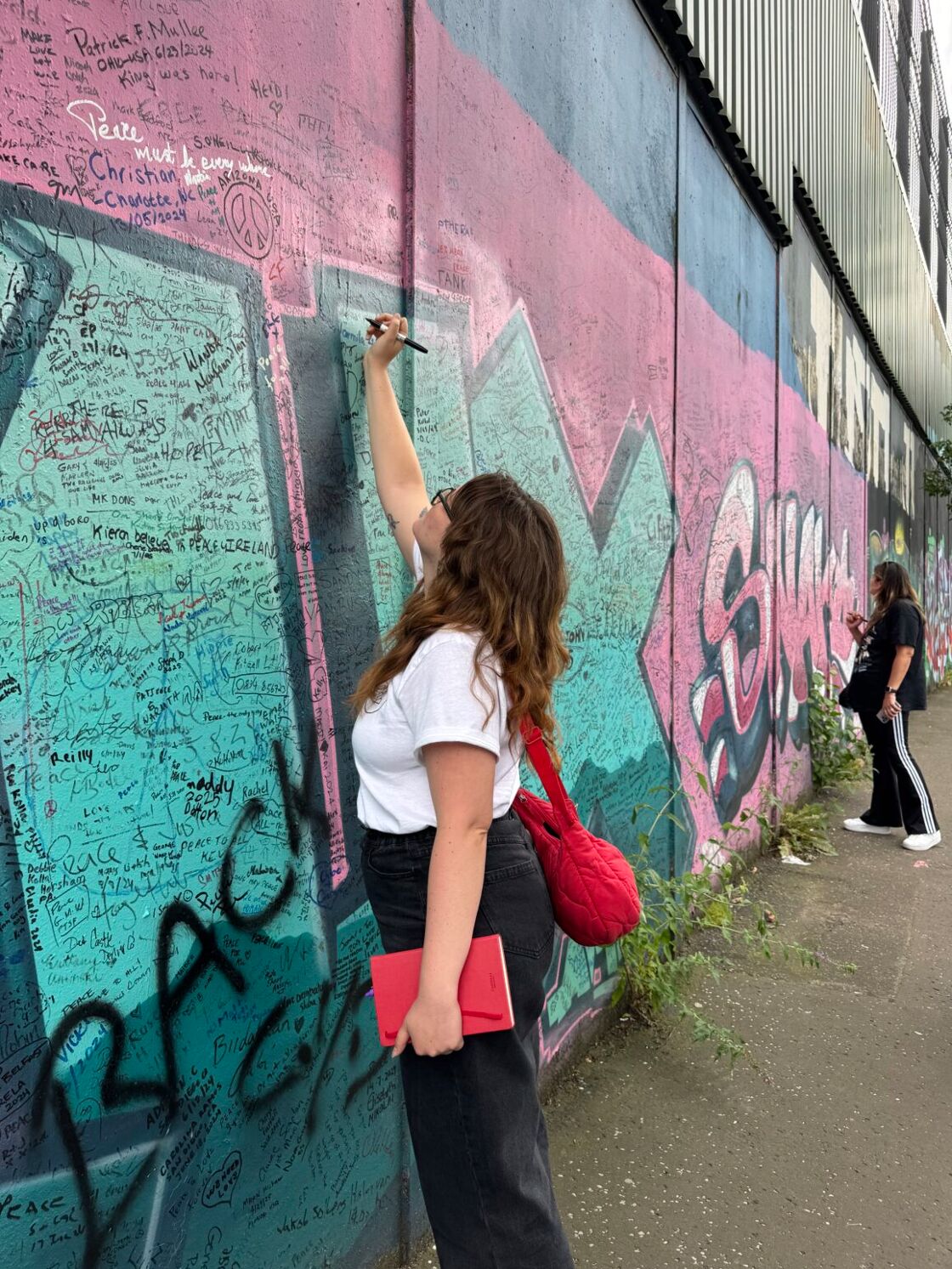
Today, as Belfast forges ahead to create a shared identity, some neighborhoods are still separated by 45-foot peace walls with differing displays of allegiance: driving through Falls Road, you’ll see Irish flags. In contrast, Shankhill Road displays the UK’s Union Flag.
After the Rain
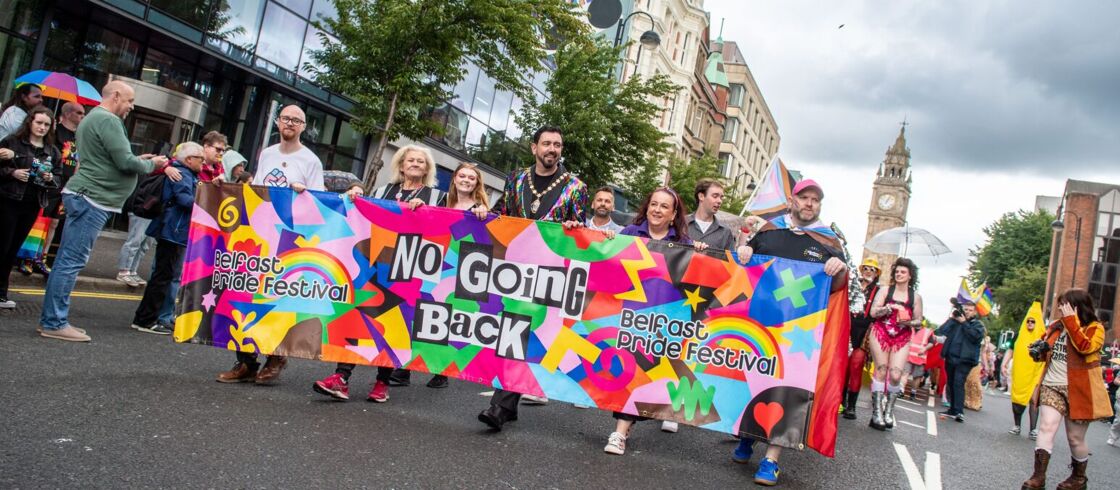
It’s an ongoing process. In some ways, events like Pride are uniting Belfast, celebrating under a flag that’s neither associated with the UK nor Ireland.
“You’ve seen the walls, but when it comes to… [Pride], those walls come down, and people are coming together. And that’s an incredible thing, and that’s where we’re heading. That one community,” said Deputy Lord Mayor, Councilor Paul Doherty, when we met at Belfast City Hall before the Pride parade in July.
Belfast Pride is the largest LGBTQ+ event in Northern Ireland and one of the largest on the entire Island of Ireland. The first march in 1991 brought out 100 brave activists. This year, Belfast Pride welcomed more than 80,000 people on parade day, united under the theme of “No Going Back.” Next year, expect much fanfare as Belfast Pride turns 35! Among the many specialty events in 2026, Thomas Wells hopes to expand his “A Queer Dander” exhibition at The MAC, exploring the history of Pride in Belfast through interviews, photographs, and objects.
Related
[PHOTOS] Serving lewks for equality at the Belfast Pride Festival
Boys, Bears and Belles celebrate at the Belfast Pride Festival 2025.[PHOTOS] Serving lewks for equality at the Belfast Pride Festival
Boys, Bears and Belles celebrate at the Belfast Pride Festival 2025.[PHOTOS] Serving lewks for equality at the Belfast Pride Festival
Boys, Bears and Belles celebrate at the Belfast Pride Festival 2025.
Year-round, visitors can now learn more about this history thanks to the newly launched “Pride in Belfast” by Belfast Hidden Tours. Led by Sam Donnelly, this two-hour walking tour outlines the history of queer life in Belfast, starting with Oscar Wilde’s sentencing for being a “s-domite,” an offense that was only decriminalized in Northern Ireland in 1982.
We learn about the fate of off-duty, gay police officer Darren Bradshaw at the city’s only openly gay bar, Parliament, in 1997, an event that sent shockwaves throughout the city; and how a fake threat was called on the opening of LGBTQ+ Kremlin nightclub in 1999, prompting drag artist Baroness Von Tramp to jump on a police landrover as the press snapped pictures. That photo graced the front page of every newspaper in town, exposing even rural areas to the growing rights movement in Northern Ireland. Today, it’s still an iconic and cherished memory for the Belfast queer community. She made an impressive lemonade out of that night’s lemons.
“As a member of the gay community in Belfast for over 30 years, I have personally witnessed a lot of injustices but also saw the growth and progression of our Pride… I am incredibly proud to tell this story,” said Donnelly.
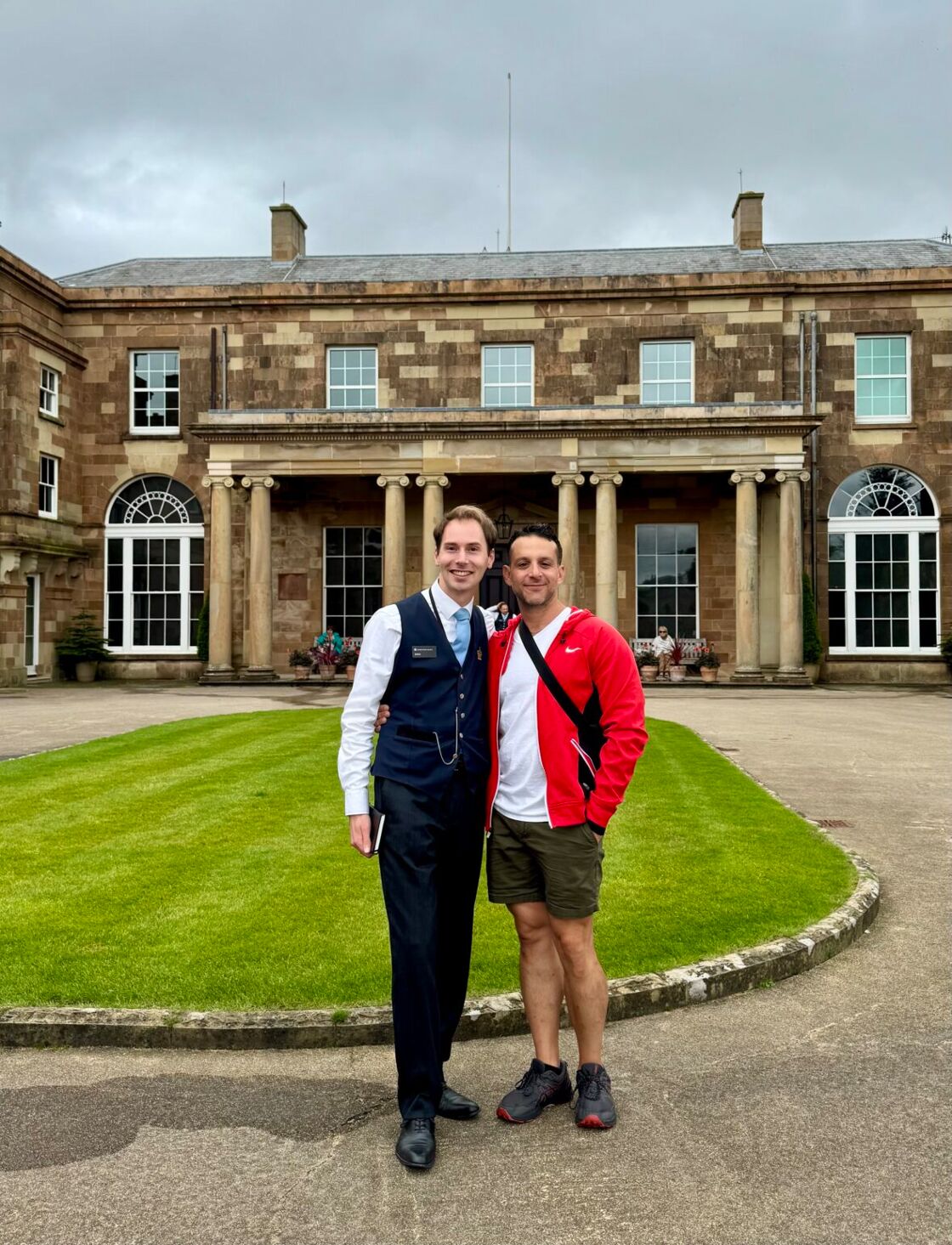
Hillsborough Castle, the only royal residence in Northern Ireland, located just outside of Belfast, also hosts special LGBTQ+ tours led by James McCabe. McCabe promises “no tea will be left unspilled” as he guides us through changing attitudes toward sexuality and gender identity, and reinterprets art from the castle’s collection through a queer lens — proving that our community has helped shape royal culture for centuries. Yass Queen!
Over the Rainbow
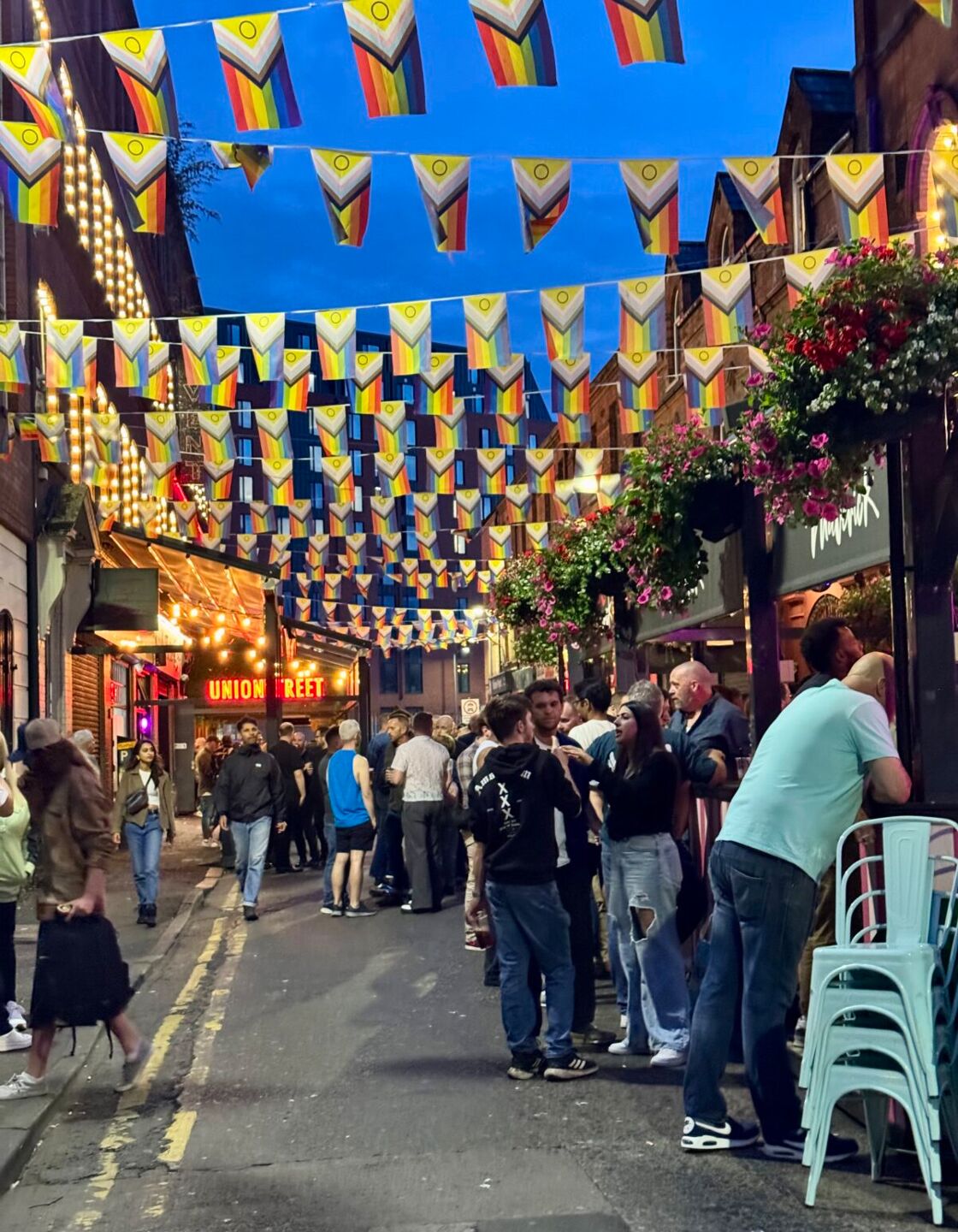
Speaking of queer royalty, Blu Hydrangea brought Belfast onto the world’s drag stage by winning the first season of RuPaul’s Drag Race: UK vs. the World. Today, she keeps a monthly residency at The Maverick, in Belfast’s Rainbow Quarter. Beyond Blu, The Maverick features local drag, drinks and dancing nightly. Anchoring the other end of the Rainbow Quarter pedestrian block, Union Street Bar also hosts local drag performers and specialty events, including Bottomless Brunch on the weekends.
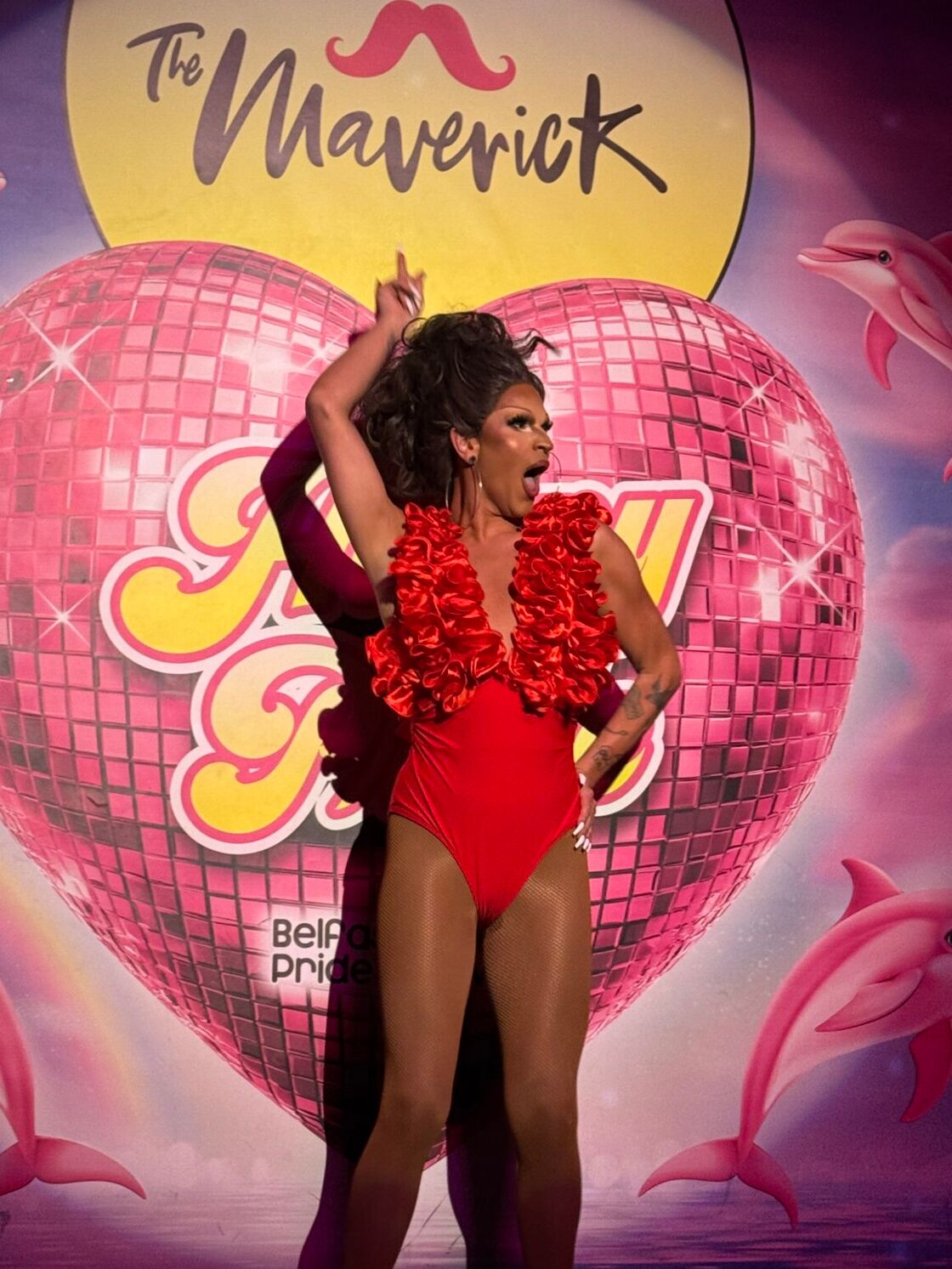
Between The Maverick and Union Street, The Reporter is a chill, queer-friendly bar with nightly events ranging from trivia night to live music. For those wanting to dance later into the night, both Kremlin and Boombox are LGBTQ+ clubs that also welcome allies to party with their queer buds.
Not-so-gentle men, if you’re looking for more muscle, brawn, and body hair, plan your trip around the first Friday of the month, when the Bubu Men Only party takes over the Shoe Factory space in the Rainbow Quarter and turns up the sexual energy for Belfast’s boys.
Regardless of your nighttime choices, stop by the lesbian-owned Spaghetti Arms for a seated meal during the day or the perfect late-night street food, right in the heart of the gayborhood.
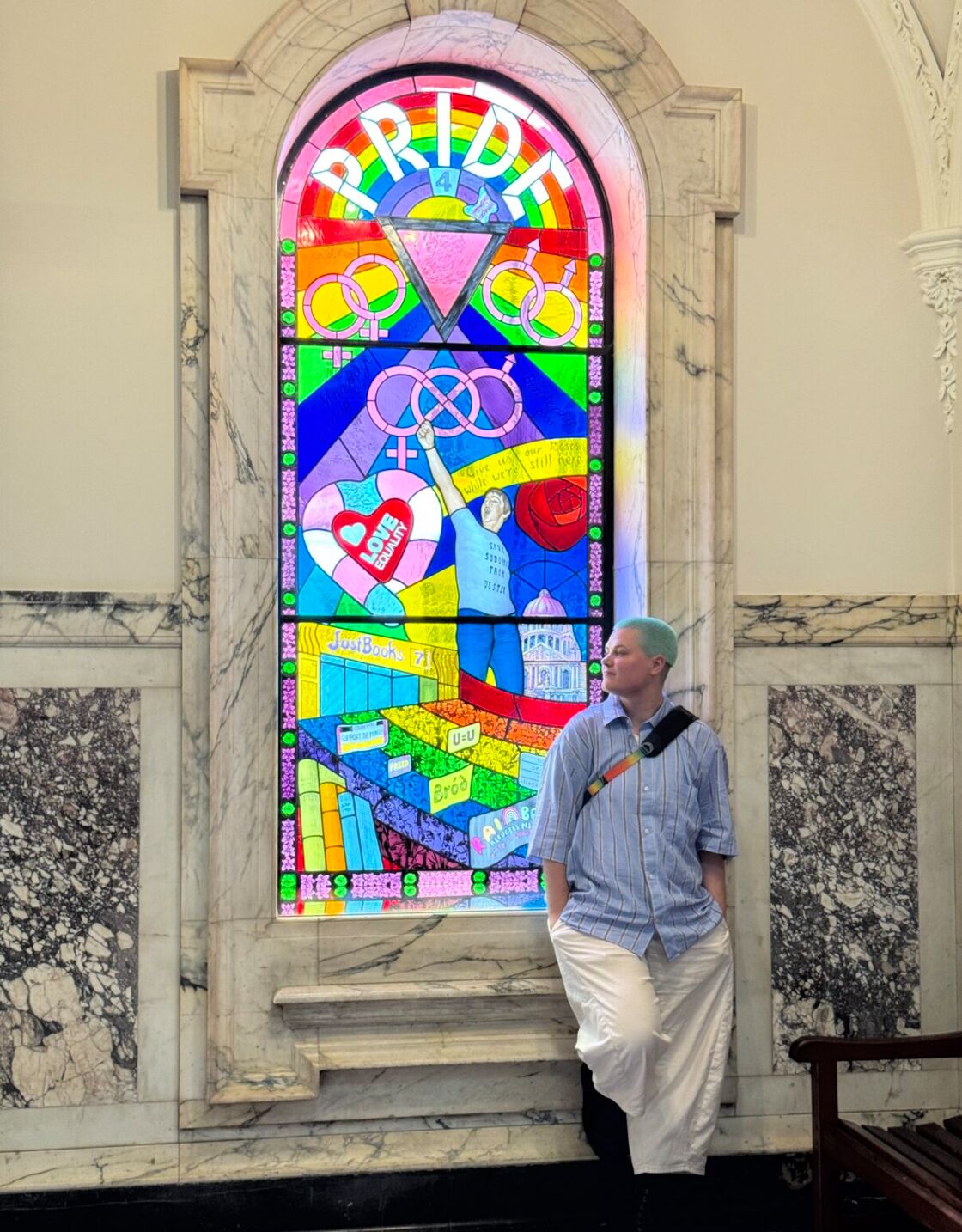
After your weekend of partying, check out Paperxclips, a queer bookstore, coffee shop, and barber shop popular with Belfast’s trans and nonbinary community. And, of course, head to City Hall to see the new Pride stained glass window unveiled earlier this year. From struggles to achievements to equality goals for the future, this window encapsulates the city’s (and in many ways Northern Ireland’s) history with a plaque that reads: “The visibility of our LGBTQ+ community contributes towards a welcoming and vibrant city and the creation of this window ensures City Hall is inclusive and reflective of all citizens in Belfast.”
Belfast has made much progress in welcoming the queer community since the 1998 peace agreement. As Councilor Paul Doherty’s speech from the Pride stage announced: “Belfast will never go back on rights. And we will never go back on our commitment to equality. Belfast belongs to all of us. Let us all continue to build a city, a society, and a community where everyone feels welcome and included. Where everyone feels respected and valued, no matter their background or identity… this is Belfast!”
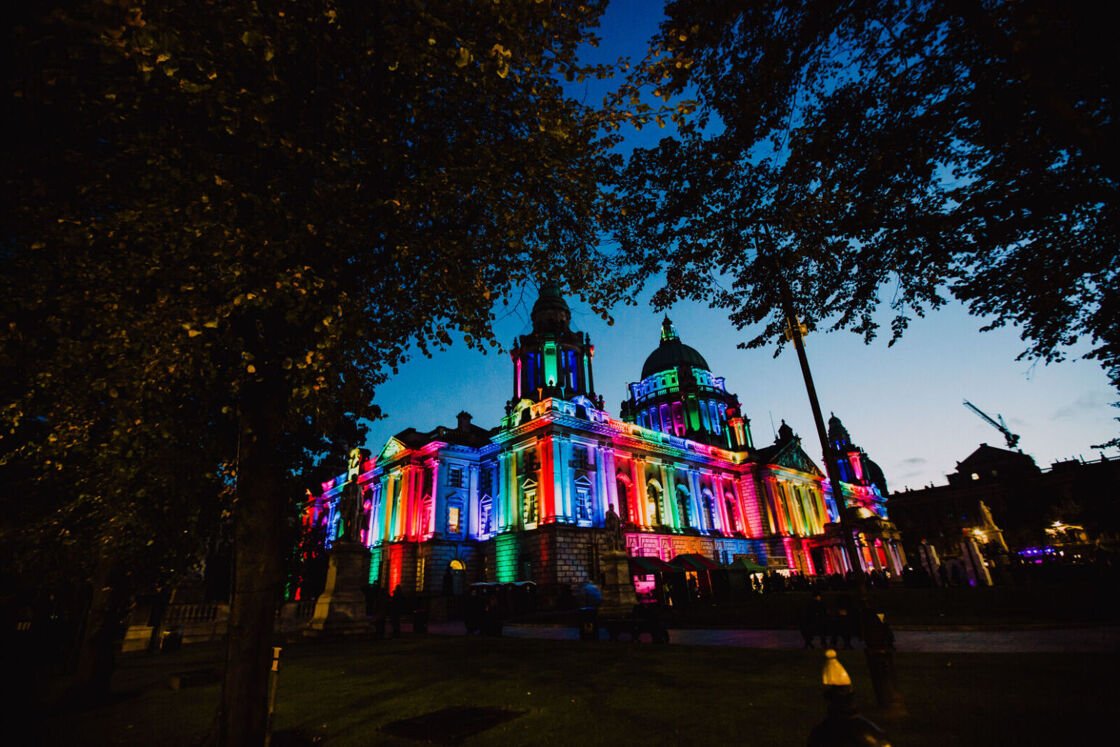
Join the GayCities newsletter for weekly updates on the best LGBTQ+ destinations and events—nearby and around the world.

 Mark
Mark 





